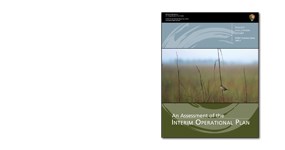
NPS Photo by Rodney Cammauf Starting in December 1999, water deliveries into Everglades National Park were modified to better protect nesting habitat of the federally endangered Cape Sable Seaside Sparrow during the spring nesting season. The suite of management changes stipulated initially in the Interim Structural and Operational Plan (ISOP), and later in the Interim Operational Plan (IOP), were designed to move water away from western Shark Slough, which was too wet for successful sparrow nesting. With funding made available through the Critical Ecosystems Studies Initiative (CESI), scientists developed an assessment protocol for gauging the effects of these changes on ecosystem function. The results of this study contributed greatly to a project evaluation report on the IOP prepared by the National Park Service in 2005. The full report is available below. RELATED PUBLICATIONS Contact the principal investigator directly with questions about this study, |
Last updated: April 14, 2015


